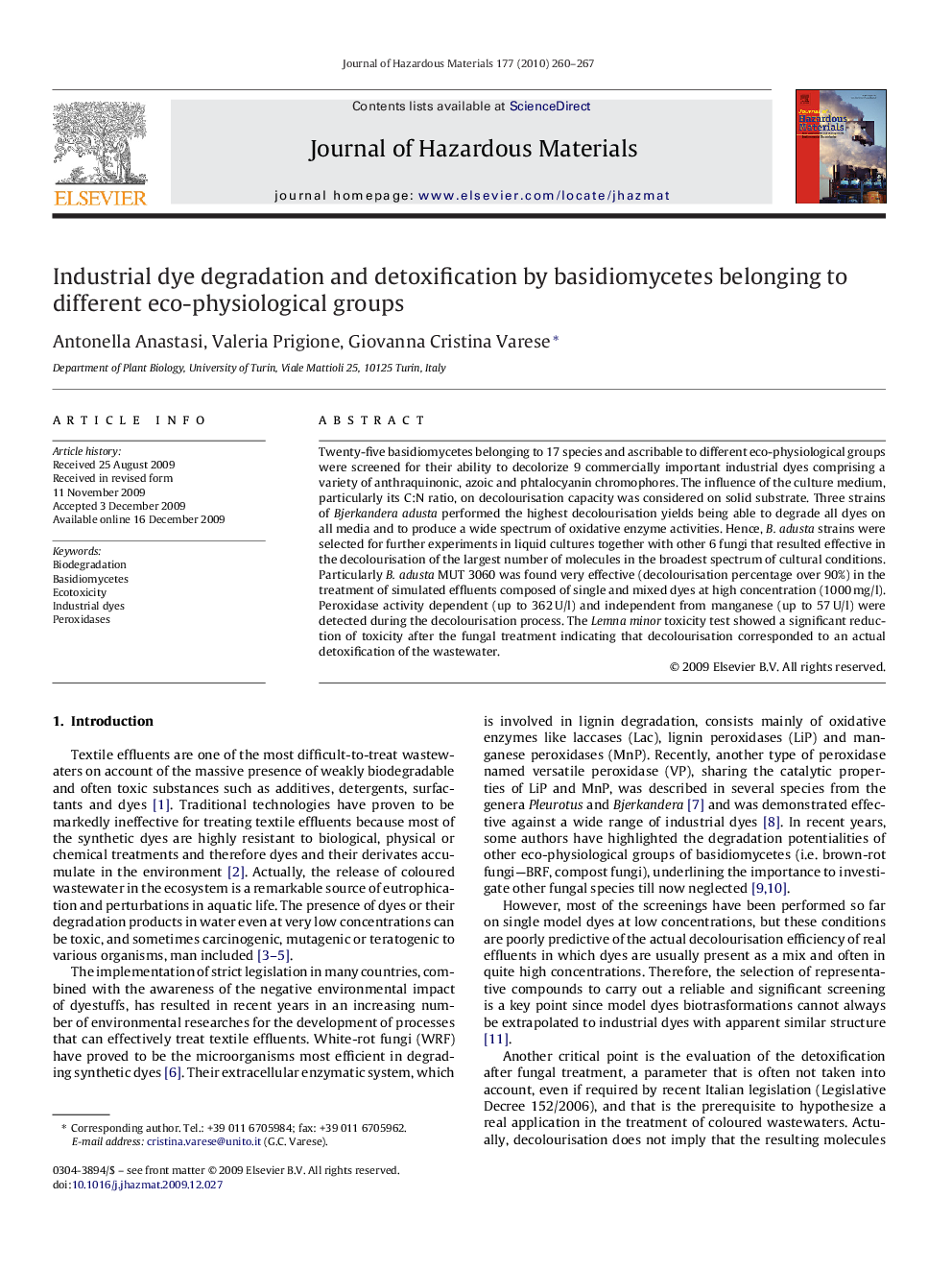| کد مقاله | کد نشریه | سال انتشار | مقاله انگلیسی | نسخه تمام متن |
|---|---|---|---|---|
| 580858 | 1453151 | 2010 | 8 صفحه PDF | دانلود رایگان |
عنوان انگلیسی مقاله ISI
Industrial dye degradation and detoxification by basidiomycetes belonging to different eco-physiological groups
دانلود مقاله + سفارش ترجمه
دانلود مقاله ISI انگلیسی
رایگان برای ایرانیان
کلمات کلیدی
موضوعات مرتبط
مهندسی و علوم پایه
مهندسی شیمی
بهداشت و امنیت شیمی
پیش نمایش صفحه اول مقاله

چکیده انگلیسی
Twenty-five basidiomycetes belonging to 17 species and ascribable to different eco-physiological groups were screened for their ability to decolorize 9 commercially important industrial dyes comprising a variety of anthraquinonic, azoic and phtalocyanin chromophores. The influence of the culture medium, particularly its C:N ratio, on decolourisation capacity was considered on solid substrate. Three strains of Bjerkandera adusta performed the highest decolourisation yields being able to degrade all dyes on all media and to produce a wide spectrum of oxidative enzyme activities. Hence, B. adusta strains were selected for further experiments in liquid cultures together with other 6 fungi that resulted effective in the decolourisation of the largest number of molecules in the broadest spectrum of cultural conditions. Particularly B. adusta MUT 3060 was found very effective (decolourisation percentage over 90%) in the treatment of simulated effluents composed of single and mixed dyes at high concentration (1000Â mg/l). Peroxidase activity dependent (up to 362Â U/l) and independent from manganese (up to 57Â U/l) were detected during the decolourisation process. The Lemna minor toxicity test showed a significant reduction of toxicity after the fungal treatment indicating that decolourisation corresponded to an actual detoxification of the wastewater.
ناشر
Database: Elsevier - ScienceDirect (ساینس دایرکت)
Journal: Journal of Hazardous Materials - Volume 177, Issues 1â3, 15 May 2010, Pages 260-267
Journal: Journal of Hazardous Materials - Volume 177, Issues 1â3, 15 May 2010, Pages 260-267
نویسندگان
Antonella Anastasi, Valeria Prigione, Giovanna Cristina Varese,